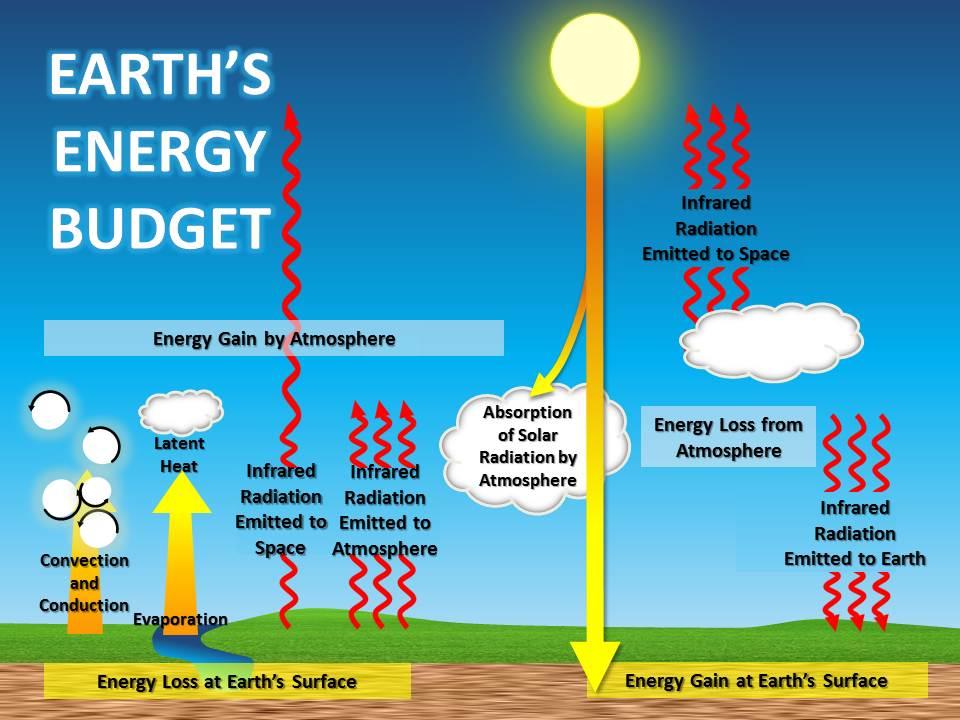Alarming Trends in Earth’s Energy Imbalance: A Call to Action
Recent studies have unveiled a shocking trend that has left the scientific community in a state of urgency. New research indicates that the rate at which Earth is accumulating energy is accelerating beyond earlier forecasts. According to a report from Live Science, our planet is absorbing more solar energy than it can emit back into space, leading to significant concerns regarding climate change and environmental stability. Despite advancements in climate science, experts are struggling to pinpoint the factors contributing to this rapid shift, raising alarms about the future of our ecosystem. As evidence continues to accumulate, one pressing question remains: what drives this unprecedented increase in Earth’s energy retention, and how does it affect humanity’s fight against climate change?
Understanding the Accelerating Energy Imbalance
The latest data highlights an alarming acceleration in Earth’s energy imbalance that exceeds previous scientific estimates. This situation arises when our planet retains more solar energy than it releases into space, resulting in rising global temperatures. Key contributors include:
- Rising levels of greenhouse gas emissions.
- Alterations in land use practices such as deforestation.
- Unanticipated feedback mechanisms within ocean systems.
The scientific community is racing against time to comprehend the mechanisms behind this swift imbalance. Traditional models have accounted for various interactions; however, discrepancies between observed data and predicted outcomes reveal gaps within current climate models. This situation could lead to:
- An increase in extreme weather events.
- A faster rate of ice melt across polar regions.
- A rise in sea levels that endangers coastal populations.
| Impact Area | Current Data Insights |
|---|---|
| Temperature Increase | The average global temperature has risen by 1.2°C since pre-industrial times. |
| Greenhouse Gas Concentration | The concentration of CO2 has surpassed 410 ppm—an all-time high. |
| Ocean Heat Content Growth | A surge of approximately 30% over the last decade has been recorded. |
Exploring the Science Behind Rising Energy Levels
The recent findings concerning Earth’s growing energy balance have sparked both concern and curiosity among scientists worldwide. While traditional climate models anticipated gradual changes over time, current observations indicate an unexpected acceleration that challenges established beliefs about climatic shifts. Researchers are now faced with potential consequences such as intensified weather patterns and disruptions within ecosystems on a global scale.
Some factors believed to contribute significantly include:
- Sustained increases in greenhouse gas emissions:An uptick due to industrial activities may be enhancing heat retention capabilities.
- Dynamics of ocean circulation:Migrations or alterations within major ocean currents could intensify heat distribution globally.
- Cascading feedback loops:Melted ice caps and thawing permafrost might release additional greenhouse gases further aggravating warming trends.
This phenomenon demands urgent investigation as scientists strive for clarity regarding its underlying processes through advanced technologies and interdisciplinary methods aimed at understanding these dynamics better.
The race includes efforts like:
- Sophisticated satellite monitoring systems:This technology provides essential insights into heat retention patterns across different climates.
- Pioneering model simulations:Create advanced predictive frameworks based on existing trends for future scenarios.
- Cross-border collaboration initiatives:Pursue international partnerships fostering shared research resources tackling these pressing issues effectively.
| Causal Factor | Potential Consequences | ||||||
|---|---|---|---|---|---|---|---|
Taking Action Against Energy Imbalance: Recommendations for Mitigation Strategies
The alarming trajectory concerning Earth’s escalating energy imbalance necessitates immediate action from policymakers, researchers, and citizens alike who play crucial roles reversing this trend.
Prioritizing investments towardsustainable renewable energies strong>, along with promoting innovations surroundingenergy efficiency technologies strong>, will be vital moving forward.
Suggested measures include:
p>
- < strong >Funding renewable projects:< / strong > Increase financial support & incentives directed towards solar power , wind farms , & other sustainable initiatives .
< li />< li >< strong >Energy conservation programs implementation:< / strong > Encourage households & businesses adopting practices conserving electricity .
< li />< li >< strong >Public transport enhancement:< / strong > Develop efficient transit systems reducing fossil fuel dependency .
< li />< li >< strong >Electric vehicle promotion:< / strong > Expand infrastructure supporting EV charging stations while offering rebates encouraging purchases .
< li /> ul>
< p />Furthermore , improving​ ;climate resilience ​ ;& #8203 ;by integrating strategies addressing climate change into urban planning frameworks will also prove essential moving forward . An effective approach must focus on educating communities regarding implications stemming from ongoing imbalances while emphasizing collective action importance through initiatives like :
< br/></ p>Initiative th > Description th > tr > Community Awareness Campaigns dt > Launch campaigns informing citizens about sustainable practices impacting their environment positively . tr >
Research Collaboration Initiatives
dt >
</ span>
</ span>
</ span></ span>
</ span>
>>>>>>
